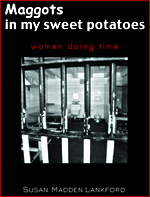These laws make it very difficult for people experiencing homelessness to exist in the public domain. They drive individuals from the cities, at what is usually a transient, vulnerable time in their lives. Further, these policies, especially laws prohibiting public food sharing, prevent others from standing in solidarity with the homeless. This isolates those experiencing homelessness even more and prevents them from building up social connections and support. According to the National Law Center on Homeless and Policy’s 2014 report on criminalization, 9 percent of U.S. cities have passed laws banning food sharing in certain public areas. Further, the National Coalition for the Homeless has identified more than 30 cities that have or that are in the process of enacting such legislation in the past 14 months.
Researcher Randall Armster wrote:
By criminalizing homelessness and eradicating unsheltered individuals from public view, the nature of this country’s democracy is changed. The United States should allow and welcome all people to participate in public discourse and utilize public spaces. When forbidden to do this, homeless individuals are dehumanized, degraded and shown that they are unwelcome and unworthy in such a ‘democratic’ society.
Bill Briscall, communications manager of RainCity Housing in Vancouver, worked with an ad agency to create benches that folded out into temporary night shelters, in response to criminalization measures that create hostile environments for the homeless in his city.
He explained that his hopes for the project were to:
encourage conversations happening at the dinner table that may change behavior and prevent homelessness in the first place, by ensuring all of us are always living in places where we feel safe, respected and heard.
Governmental and non-governmental organizations alike are fighting against this criminalization, but their main argument is not about responsibility or morality. It is financial — that the criminalization of homelessness is not cost effective, and that jail time is far more expensive to tax payers than providing housing.
The concept of housing as a human right is largely neglected when the arguments for decriminalizing homelessness focus on the potential financial benefits rather than the suffering and hardship that could be eliminated. This emphasis must be changed.
As the National Law Center on Homelessness and Poverty explained in its report on criminalization:
Yes, ending homelessness is cost-effective for the taxpayer… But dollars are not the only cost of homelessness; humans experience homelessness at a horrific expense to the health and well-being of themselves and their communities. When we make the case that safe and stable housing is a human right… We can tap into the passions, relationships, and experiences that cut across sectors — and budget sheets — to create new partnerships and solutions.
The United States is in dire need of a shift in discourse and in policy in order to tackle such a complex, destructive problem.
The 50-plus cities that have criminalized homelessness since 2011 include Los Angeles, Philadelphia, Orlando, St.Petersburg, Kalamazoo, Denver, Phoenix, Honolulu and Tampa. Others are considering such cruel laws.



 passed three juvenile justice-related bills, one essentially expanding Florida’s civil citation program, one expunging a juvenile’s record at 21 if there are no further infractions and one holding the miscreant’s parents responsible for financial damage, if they can afford to pay.
passed three juvenile justice-related bills, one essentially expanding Florida’s civil citation program, one expunging a juvenile’s record at 21 if there are no further infractions and one holding the miscreant’s parents responsible for financial damage, if they can afford to pay.

 student homeless coordinator since 1987, although they mostly worked with shelters until the 2002 McKinney-Vento Act. During the 2011 fiscal year, the McKinney-Vento Education for Homeless Children and Youths Grant allocated $63.6 million across the country, helping every state address the problems associated with student homelessness. In the Milwaukee School District, the McKinney-Vento grant, along with Title I funding, support three homeless coordinators, with the requirement that school districts remove all barriers to the educational process for homeless children and reach out to more homeless kids – including those who have sleeping arrangements that are not permanent or regular.
student homeless coordinator since 1987, although they mostly worked with shelters until the 2002 McKinney-Vento Act. During the 2011 fiscal year, the McKinney-Vento Education for Homeless Children and Youths Grant allocated $63.6 million across the country, helping every state address the problems associated with student homelessness. In the Milwaukee School District, the McKinney-Vento grant, along with Title I funding, support three homeless coordinators, with the requirement that school districts remove all barriers to the educational process for homeless children and reach out to more homeless kids – including those who have sleeping arrangements that are not permanent or regular.










